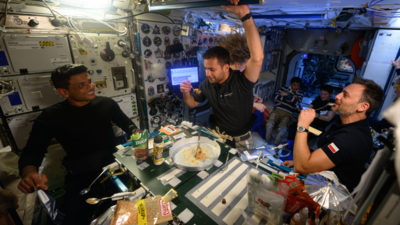Closest- ever glimpse of the Sun: Nasa probe captures rare solar fury— watch

Nasa in a landmark development for space science has released never-seen-before close-range footage of the Sun’s violent activity, recorded by its Parker Solar Probe.The images offer a rare, real-time look into one of the most powerful coronal mass ejections (CMEs) ever captured.Launched in 2018, the Parker Solar Probe was designed to study the Sun’s outer atmosphere — the corona. On December 24, 2024, it made its closest-ever approach, flying just 3.8 million miles from the Sun’s surface, and captured highly detailed images of a CME using its onboard camera system, WISPR (wide-field imager for parker solar probe).
The visuals revealed turbulent flows and swirling eddies inside the CME — the first direct visual proof of Kelvin-Helmholtz instabilities, a fluid dynamic effect long suspected but never observed this close to the Sun.Since its launch, the Parker Probe has consistently broken its own records for closest distance to the Sun.The visuals mark the first time scientists have directly observed such detailed solar plasma behaviour from within the CME itself.“We’re watching CMEs pile up on each other,” said Angelos Vourlidas, scientist at Johns Hopkins Applied Physics Laboratory, which built and operates the probe.“This helps us learn how they merge and how that affects space weather.”Despite flying through intense heat and radiation, Nasa has confirmed that all systems of Parker Probe remained fully operational, showcasing the engineering marvel behind the mission.
What Parker Probe revealed so far
Experts believe the data could vastly enhance predictions for space weather, which affect not just satellites but also astronaut safety in space and global communication systems.“We are witnessing where space weather threats to Earth begin, with our eyes, not just with models,” said Nicky Fox, associate administrator at Nasa.“This new data will also help us improve our technology for the safety of astronauts and our technology, both in space and on Earth.”Its next flyby is scheduled for September 15, 2025, with scientists hoping to unlock further secrets about how solar outflows originate and evolve.






